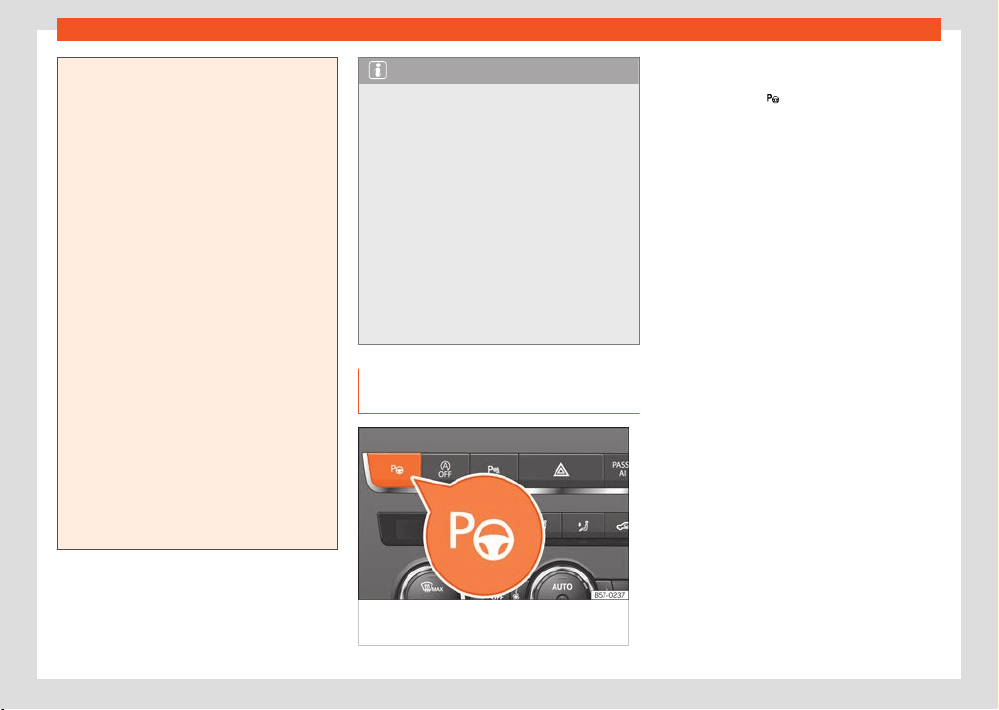Loading ...
Loading ...
Loading ...

Parking and manoeuvring
193
Parking aid system (Park Assist)
damaged while parking. If necessary, oppor-
t
unely interrupt the parking manoeuvre to
avoid damaging the vehicle.
●
The ultrasound sensors on the bumper may
be damaged or shifted in the event of a colli-
sion, for example, when entering or exiting a
parking space.
●
If you use high-pressure or vapour equip-
ment to clean the ultrasound sensors, do not
apply it directly unless very briefly and al-
ways from a distance of more than 10 cm.
●
A registration plate or plate holder on the
front with larger than the space for the reg-
istration plate, or a registration plate that is
curved or warped can cause:
–
False detections.
–
The sensors to lose visibility.
–
Cancellation of the parking manoeuvre
or defective parking.
●
If one of the ultrasonic sensors is dam-
aged, the area corresponding to that group
of sensors (front or rear) is deactivated and
cannot be activated until the fault is correc-
ted. However, you can still use the sensors
of the other bumper as per usual. If there
is a fault in the system, consult a specialist
workshop. SEAT recommends visiting a SEAT
dealership for this.
Note
●
In order to guarantee good system oper-
ation, k
eep the ultrasound sensors of the
bumper clean, free of snow or ice, and do not
cover them with adhesives or other objects.
●
Certain sources of noise, such as rough as-
phalt or paving stones and the noise of other
vehicles can induce the Park Assist system
or ParkPilot to give erroneous warnings. The
presence of metal objects can also aect
the manoeuvre.
●
In order to become familiar with the system
and its functions, SEAT recommends that you
practice operating the Park Assist system in
an area where there is not too much trac or
in a car park.
Description of the parking assist sys-
tem
Fig.137 In the centr
e console, top section:
button to switch on the Park Assist system.
The components of the Park Assist system are
the ultr
asonic sensors located in the front and
rear bumpers, the
button to switch the sys-
t
em on and o and the messages on the instru-
ment panel display.
Prerequisites for parking
●
The traction control (TCS) must be switched
on ›››page152.
●
Speed when passing next to the parking
space (parallel parking): do not exceed approx.
40 km/h (25 mph).
●
Speed when passing next to the parking
space (angle parking): do not exceed approx.
20 km/h (12 mph).
●
Keep a distance between 0.5 and 2.0me-
tres when driving past the parking space.
●
Space length (parallel parking): vehicle
length + 0.8 metres.
●
Space width (parking bay): vehicle width
+ 0.8 meters.
●
Do not exceed approximately 7 km/h
(4mph) when parking.
Loading ...
Loading ...
Loading ...